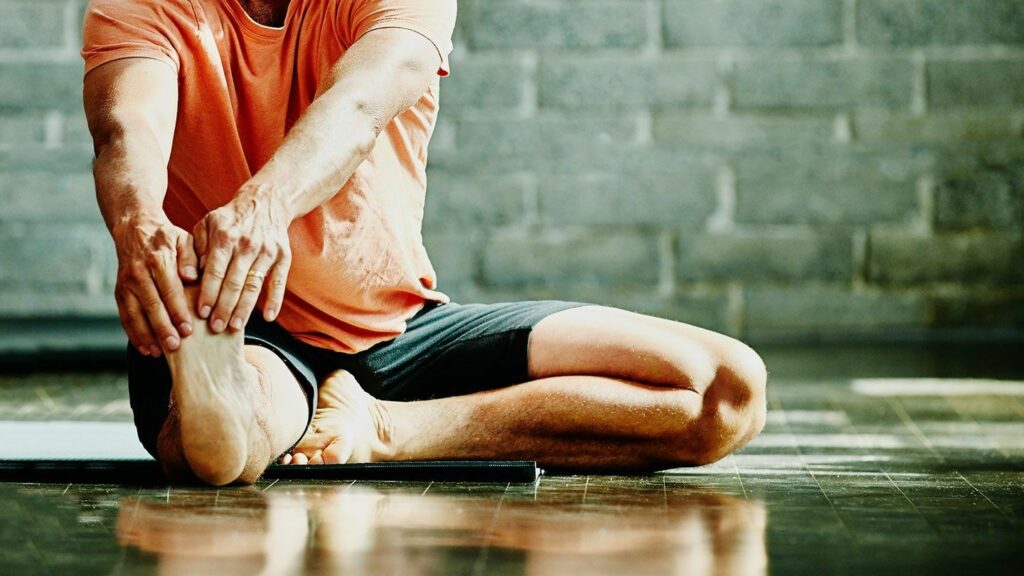Do you experience knee pain regularly? Are you looking for exercises that you can do at home to help relieve the pain? If so, you’re in luck! In this blog post, we will discuss some different knee pain exercises that you can do right in your living room. We will also provide tips on how to get started and how often you should be completing these exercises. Let’s get started.
Contents
What Is Knee Pain?
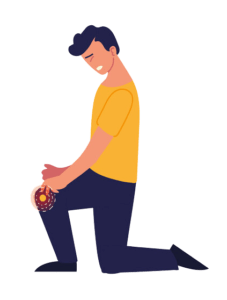
Knee pain is a common complaint that affects people of all ages. The knee is a complex joint that is made up of bones, muscles, tendons, and ligaments. All of these structures work together to allow the knee to move.
There are many different causes of knee pain. It can be caused by an injury, such as a tear in the ligament or meniscus. It can also be caused by arthritis or other degenerative diseases.
Knee pain can range from mild to severe. It can be accompanied by swelling, redness, warmth, and stiffness. Knee pain can make it difficult to walk, climb stairs, or even stand for long periods. Knee pain can also make it difficult to sleep.
Different Knee Pain Exercises
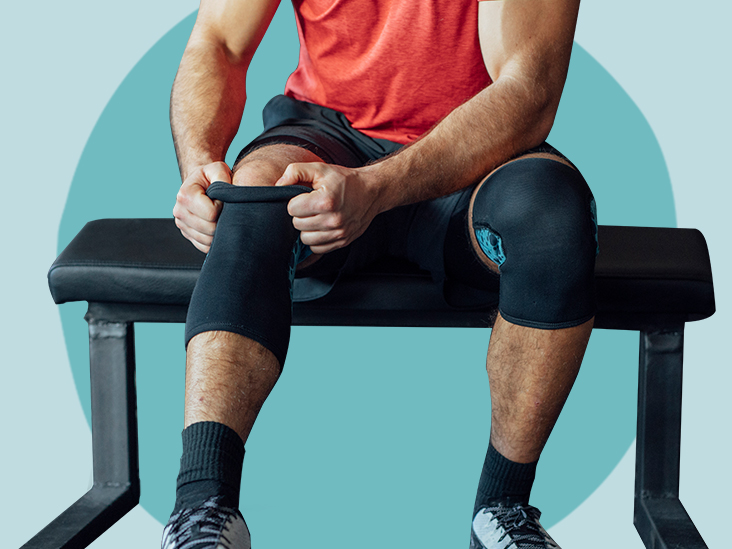
If you are experiencing knee pain, there are several things that you can do at home to help relieve the pain. Below is a list of 14 knee pain exercises that you can do at home.
Hamstring Stretch
This is one of the best exercises for knee pain. It helps to stretch the hamstring muscles, which can help to take the pressure off of the knee joint. To do this stretch, lie on your back with your legs straight. Place a towel around your foot and hold onto both ends of the towel. Gently pull on the towel until you feel a stretch in the back of your leg. Hold this stretch for 30 seconds and then repeat on the other side.
Heel Slides
Heel slides are a simple but effective way to stretch the calves, hamstrings, and quadriceps – all of which can contribute to knee pain.
- To start, lie flat on your back with both legs straight.
- Use your hands to bring one heel up towards your buttock.
- Keeping your leg straight, slowly slide the heel back towards the floor.
- Go as far as you can while still maintaining a straight leg.
- Hold the stretch for 30 seconds and then repeat on the other side.
- You can also do this exercise with both legs at the same time by sliding both heels away from your buttocks simultaneously.
Hip Flexor Stretch
The hip flexors are a group of muscles that attach the thigh bone to the pelvis and help to lift the knee. If these muscles are tight, they can put pressure on the knee joint and cause pain.
- To stretch the hip flexors, start by lying on your back with both legs straight.
- Bring one knee up towards your chest and place your hand on your thigh to help keep the leg in place.
- Use your other hand to grab hold of your ankle and pull it towards your glutes.
- Hold this stretch for 30 seconds before releasing and repeating on the other side.
- For an extra stretch, try adding a gentle bouncing motion at the end of the stretch.
Patellar Mobilization
Patellar mobilization is a great exercise for people with patellofemoral pain syndrome (PFPS), which is a common type of knee pain. This exercise helps to increase the range of motion in the patella (knee cap).
- To start, kneel on a cushioned surface with your legs at a 90-degree angle.
- Place your hands on either side of your patella (knee cap).
- Gently move your patella up and down, side to side, and in circles.
- Do this for 10-15 repetitions in each direction.
- You can also try this exercise with one leg at a time if it is more comfortable for you.
Partial Squats
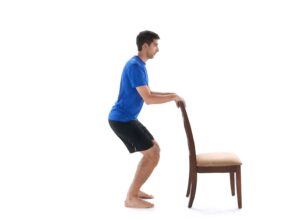
Squats are a great exercise for people with knee pain because they help to strengthen the muscles around the knee joint. However, if you have pain when doing a full squat, you can try a partial squat instead.
- To do a partial squat, stand with your feet shoulder-width apart and your hands at your sides.
- Bend your knees and lower your hips until your thighs are parallel to the ground.
- Make sure that your knees stay in line with your toes and that you don’t let them collapse inward.
- Hold this position for 2-3 seconds before returning to the starting position.
- Do 10-15 repetitions of this exercise.
Step-Ups
Step-ups are a great way to strengthen your leg muscles, which can help relieve knee pain. To do a step-up, stand in front of a sturdy chair or bench. Place your left foot on the chair and press down, using your left leg to lift your body onto the chair. Step back down with your left leg, then repeat with your right leg. Do 10 to 15 repetitions on each side.
This exercise is a great way to strengthen your leg muscles, which can help relieve knee pain.
Lunges
Lunges are a great way to strengthen your leg muscles, which can help take pressure off your knees.
How to do it: Start by standing with your feet together and your hands on your hips. Step forward with one leg, keeping your back straight and bending your front knee until it’s at a 90-degree angle. Make sure your front shin is perpendicular to the ground and that your back knee isn’t touching the floor. Return to the starting position and repeat with the other leg. Aim for 10 reps on each side.
Calf Stretches
Stretching your calf muscles can also help relieve knee pain.
How to do it: Stand with both feet flat on the ground and place your hands on a wall in front of you. Place your left leg behind your right leg and lean forward, keeping your back straight, until you feel a stretch in your calf. Hold for 30 seconds and repeat with the other leg.
Quadriceps Stretches
Quadriceps stretches are important for people with knee pain because they help to strengthen and stretch the muscles around the knee.
- Standing Quad Stretch: Start by standing up straight and holding onto a chair or wall for balance. Bend one leg back behind you and grab your ankle with your hand. Gently pull your ankle towards your buttock until you feel a stretch in your quad muscle. Hold this position for 30 seconds and then repeat on the other side.
- Seated Quad Stretch: Start by sitting on the ground with your legs straight out in front of you. Bend one leg and bring your foot up to rest against your thigh. Use your hand to grab hold of your ankle and gently pull it toward your buttock until you feel a stretch in your quad muscle. Hold this position for 30 seconds and then repeat on the other side.
- Quad Stretch with a Band: Start by looping a resistance band around your thigh, just above your knee. Lie on your stomach and prop yourself up on your elbows so that the band is pulled taut. Gently kick your leg back until you feel a stretch in your quad muscle. Hold this position for 30 seconds and then repeat on the other side.
- Standing IT Band Stretch: Start by standing up straight and crossing one leg in front of the other. Bend at the waist and reach down toward your crossed leg, grabbing hold of your ankle or calf.
Wall Sits
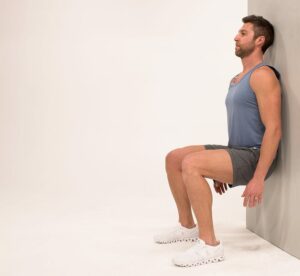
Wall sits are a great way to improve your knee pain. Simply slide your back down a wall until your thighs are parallel to the ground. Make sure your knees are directly over your ankles and hold for as long as you can.
Also known as a “static squat,” the wall sit is an isometric exercise, meaning your joint angles and muscle lengths don’t change (as opposed to a dynamic or isotonic movement, like running).
While doing a wall sit, you work most of the muscles in your lower body, including your quadriceps (the muscles on the front of your thighs), hamstrings (on the back of your thighs), glutes (your butt muscles), and calves.
Heel Raises
Heel raises are another great way to ease knee pain. To do them, stand with your feet hip-width apart and place your hands on your hips. Slowly raise onto your toes, then lower back down. Start with three sets of 10 and work your way up.
If you want a bit more of a challenge, try doing single-leg heel raises. To do these, stand on your left foot with your right leg slightly lifted behind you. Keeping your core engaged, raise onto your toes, then lower back down. Complete three sets of 10 on each leg.
Calf Raises
Calf raises are another good exercise for knee pain. They help strengthen the muscles around your shin, which can take some of the pressure off your knees. To do a calf raise, stand with the balls of both feet on a raised surface like a step or curb. To keep your core engaged, raise your heels so you’re standing on your toes. Hold for a count of two, then lower back down. Do three sets of 10 repetitions.
Hamstring Curls
Hamstring curls are a great way to strengthen the muscles in the back of your leg and help relieve knee pain. To do this exercise, lie on your back with your legs extended straight in front of you. Place a small towel under your right foot. Use your hamstring to curl your right leg up towards your glutes, keeping your left leg straight. Pause at the top of the curl for a count of two, then slowly lower back to the starting position. Do three sets of 10 repetitions on each side.
Conclusion
Knee pain can significantly impact your quality of life. The good news is that there are several knee exercises you can do at home to help ease the pain.
Before beginning any new exercise routine, be sure to check with your doctor or physical therapist to make sure the exercises are appropriate for you and won’t make your pain worse. We provide effective Knee pain treatment.
Once you have the go-ahead, give these 14 knee pain exercises a try. With consistency, you should start to see some improvement in your pain levels within a few weeks. Physical Therapy help patients recover from pain. If you’re experiencing Back pain, Shoulder pain, Knee pain, Neck pain, Elbow pain, Hip pain, or Arthritis pain, a physical therapist at MantraCare can help: Book a physiotherapy session.
